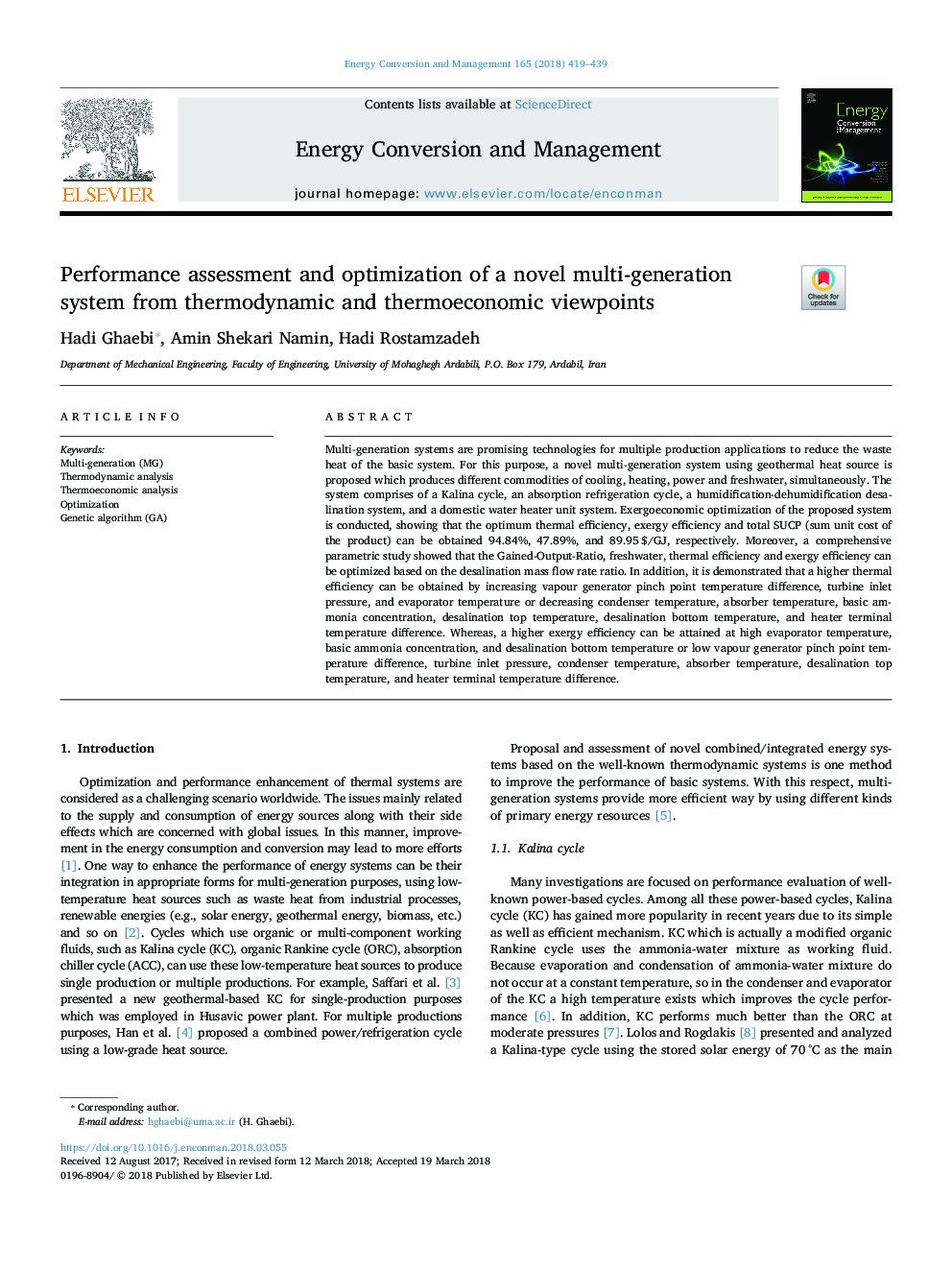| کد مقاله | کد نشریه | سال انتشار | مقاله انگلیسی | نسخه تمام متن |
|---|---|---|---|---|
| 7158587 | 1462797 | 2018 | 21 صفحه PDF | دانلود رایگان |
عنوان انگلیسی مقاله ISI
Performance assessment and optimization of a novel multi-generation system from thermodynamic and thermoeconomic viewpoints
ترجمه فارسی عنوان
ارزیابی عملکرد و بهینه سازی یک سیستم چند نسلی جدید از دیدگاه های ترمودینامیکی و گرما اقتصادی
دانلود مقاله + سفارش ترجمه
دانلود مقاله ISI انگلیسی
رایگان برای ایرانیان
کلمات کلیدی
موضوعات مرتبط
مهندسی و علوم پایه
مهندسی انرژی
انرژی (عمومی)
چکیده انگلیسی
Multi-generation systems are promising technologies for multiple production applications to reduce the waste heat of the basic system. For this purpose, a novel multi-generation system using geothermal heat source is proposed which produces different commodities of cooling, heating, power and freshwater, simultaneously. The system comprises of a Kalina cycle, an absorption refrigeration cycle, a humidification-dehumidification desalination system, and a domestic water heater unit system. Exergoeconomic optimization of the proposed system is conducted, showing that the optimum thermal efficiency, exergy efficiency and total SUCP (sum unit cost of the product) can be obtained 94.84%, 47.89%, and 89.95â¯$/GJ, respectively. Moreover, a comprehensive parametric study showed that the Gained-Output-Ratio, freshwater, thermal efficiency and exergy efficiency can be optimized based on the desalination mass flow rate ratio. In addition, it is demonstrated that a higher thermal efficiency can be obtained by increasing vapour generator pinch point temperature difference, turbine inlet pressure, and evaporator temperature or decreasing condenser temperature, absorber temperature, basic ammonia concentration, desalination top temperature, desalination bottom temperature, and heater terminal temperature difference. Whereas, a higher exergy efficiency can be attained at high evaporator temperature, basic ammonia concentration, and desalination bottom temperature or low vapour generator pinch point temperature difference, turbine inlet pressure, condenser temperature, absorber temperature, desalination top temperature, and heater terminal temperature difference.
ناشر
Database: Elsevier - ScienceDirect (ساینس دایرکت)
Journal: Energy Conversion and Management - Volume 165, 1 June 2018, Pages 419-439
Journal: Energy Conversion and Management - Volume 165, 1 June 2018, Pages 419-439
نویسندگان
Hadi Ghaebi, Amin Shekari Namin, Hadi Rostamzadeh,
